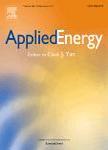版权所有:内蒙古大学图书馆 技术提供:维普资讯• 智图
内蒙古自治区呼和浩特市赛罕区大学西街235号 邮编: 010021

作者机构:Peoples Publ Secur Univ China Sch Traff Management Beijing Peoples R China Hong Kong Polytech Univ Shenzhen Res Inst Shenzhen Peoples R China Hong Kong Polytech Univ Dept Land Surveying & Geoinformat Hung Hom Kowloon Hong Kong Peoples R China Xinjiang Univ Xinjiang Key Lab Green Construct & Smart Traff Con Urumqi Peoples R China Beijing Transport Inst 9 Liuliqiao South Lane Beijing 100073 Peoples R China China Univ Petr Coll Chem Engn & Environm Beijing Peoples R China Hong Kong Polytech Univ Res Inst Sustainable Urban Dev Hong Kong Peoples R China Hong Kong Polytech Univ Smart Cities Res Inst Hong Kong Peoples R China Hong Kong Polytech Univ Shenzhen Technol & Innovat Res Inst Futian Shenzhen Peoples R China
出 版 物:《APPLIED ENERGY》 (Appl. Energy)
年 卷 期:2025年第383卷
核心收录:
学科分类:0820[工学-石油与天然气工程] 0817[工学-化学工程与技术] 08[工学] 0807[工学-动力工程及工程热物理]
主 题:Electric Vehicles Charging Demand Prediction Spatial-Temporal Graph Recurrent Network Graph Convolutional Neural Network Gated Recurrent Unit
摘 要:Predicting Electric vehicle (EV) charging demand can facilitate the efficient operation and management of the smart power grid and intelligent transportation systems. We propose an adaptive spatial-temporal graph recurrent network (ASTGRN) to predict the EV charging demand in short term at the charging station level. Specifically, we design an adaptive graph learning layer that learns the spatial correlations in a data-driven manner. Additionally, an embedding project layer is integrated to enhance the graph learning layer. Subsequently, a graph recurrent layer consisting graph convolutional kernel and gated recurrent unit is employed to extract spatial-temporal features from the observations. We evaluate the proposed ASTGRN model using a real- world EV GPS trajectory dataset containing charging information of over 76,000 EVs in Beijing. The experiment results suggest that ASTGRN achieves state-of-the-art performance compared to those advanced spatial-temporal prediction models (e.g., Temporal Graph Convolutional Network and GraphWave Net). The effectiveness of the proposed model in charging demand prediction indicates that the spatial correlation between different charging stations may not be related to geographical distance in the charging demand prediction task, and the use of prior knowledge of geographical location may undermine model performance.